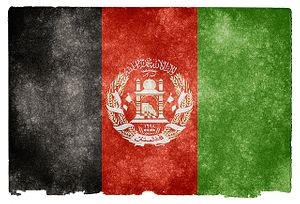Despite setbacks and assuredly more challenges ahead, the Afghan government and the Taliban are making incremental progress on a prisoner exchange — a first step in intra-Afghan discussions — via video conferencing.
The U.S.-Taliban deal, settled on February 29, mentioned the release of up to 5,000 Taliban prisoners held by the Afghan government and the release of 1,000 prisoners held by the Taliban. The agreement — to which the Afghan government was not a party — pegged March 10 for the start of intra-Afghan talks and stated that the prisoner release would occur before such talks.
Initially, Afghan President Ashraf Ghani rebuffed the idea of releasing Taliban prisoners prior to talks. He eventually came around, as has his rival Abdullah Abdullah, who on March 26 said the release of prisoners would help inch the peace process ahead. Earlier in March , Ghani agreed to release 1,500 prisoners pursuant to a guarantee from the Taliban that the released would not return to the fight.
In early March, Ghani and Abdullah held separate inaugurations. Ghani was declared the winner of last September’s presidential election by Afghanistan’s Independent Election Commission in February and the international community appears to have lined up behind him. Abdullah served as chief executive officer in the National Unity Government that was established after the 2014 election ended in contention; he’s declared himself president after contesting the results of the 2019 poll.
With political turmoil in Kabul, and a global pandemic to boot, there could hardly be a worse time for the Afghan government to be negotiating with the Taliban. But here we are.
On Wednesday, Taliban spokesman Suhail Shaheen tweeted that the Taliban and the Afghan government held a video conference to discuss the details of the prisoner release. Teams from the United States, Qatar, and the International Committee of the Red Cross were also involved.
In his tweets, Shaheen used the term “IEA,” the Islamic Emirate of Afghanistan — the name the Taliban used for its government when it controlled Afghanistan and still uses for itself. He referred to the Afghan government as the “Kabul adm” — Kabul administration. The Taliban has long maintained that the administration in Kabul is not the legitimate government of Afghanistan, but merely a puppet of the West.
Shaheen stated in another tweet that the “process of prisoners release will practically start on March 31.” In earlier tweets, U.S. Special Representative Zalmay Khalilzad announced that “The two sides agreed prisoner releases by both sides will start March 31.” Khalilzad called it a “positive development.”
The Afghan National Security Council (NSC) said in its own tweets that “100 prisoners will be freed on humanitarian grounds – including health, age and vulnerability to #COVID19 – by March 31 after guarantees by Taliban and the prisoners that they will not re-enter the fight.” The NSC also said that to further discussions, a Taliban team would meet “face-to-face” in Afghanistan with the Afghan government.
The movement on prisoner releases comes after a surprising visit by U.S. Secretary of State Mike Pompeo to Afghanistan last week, aimed at finding common ground between Ghani and Abdullah. Pompeo failed in that measure and left for Washington, threatening to slash aid to Afghanistan by $1 billion.
Abdullah tweeted that he did not see any flexibility in Ghani’s stance and warned that — contrary to Ghani’s brush off of the aid cut — “The U.S. decision to cut aid by $1B in 2020 if we fail to work together is serious, has far-reaching repercussions & cannot be irresponsibly dismissed.”
Will Taliban prisoner releases begin on March 31? We’ll see next week. Previous deadlines have come and gone — blown up by the vicissitudes of politics and violence in Afghanistan. If the releases do begin, it’s only the tip of the proverbial iceberg when it comes to the Afghan peace process.
































